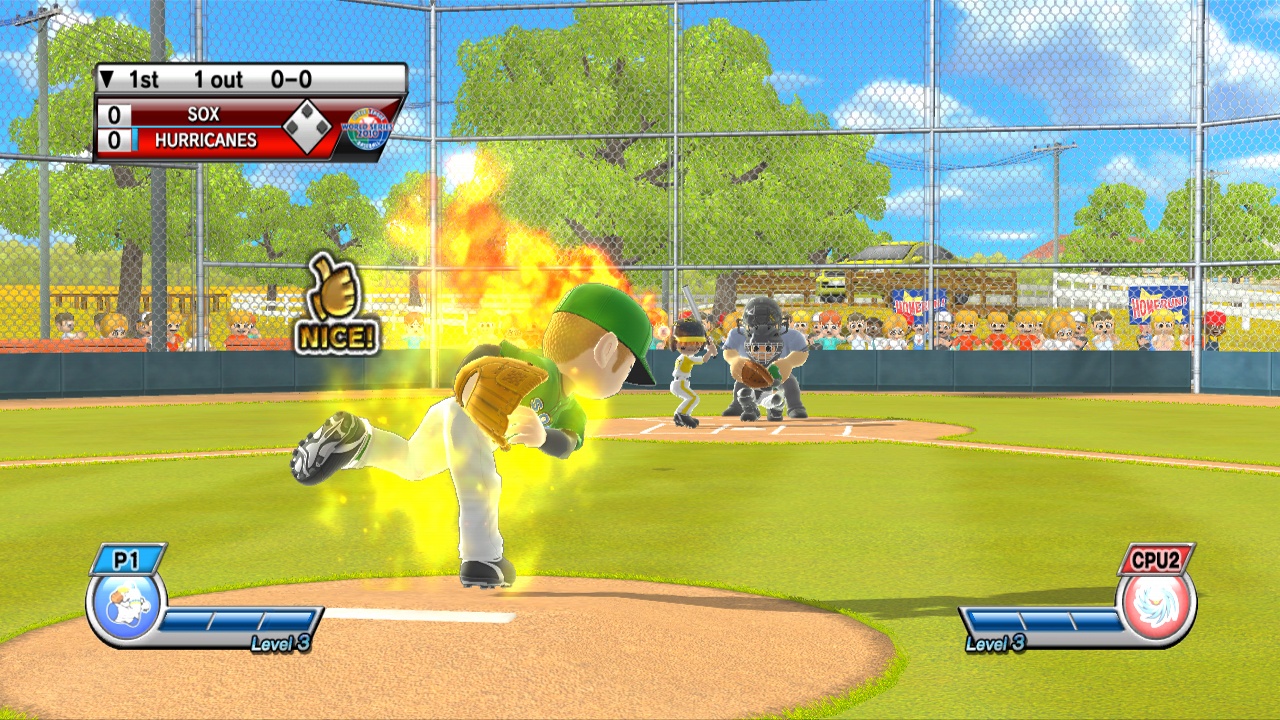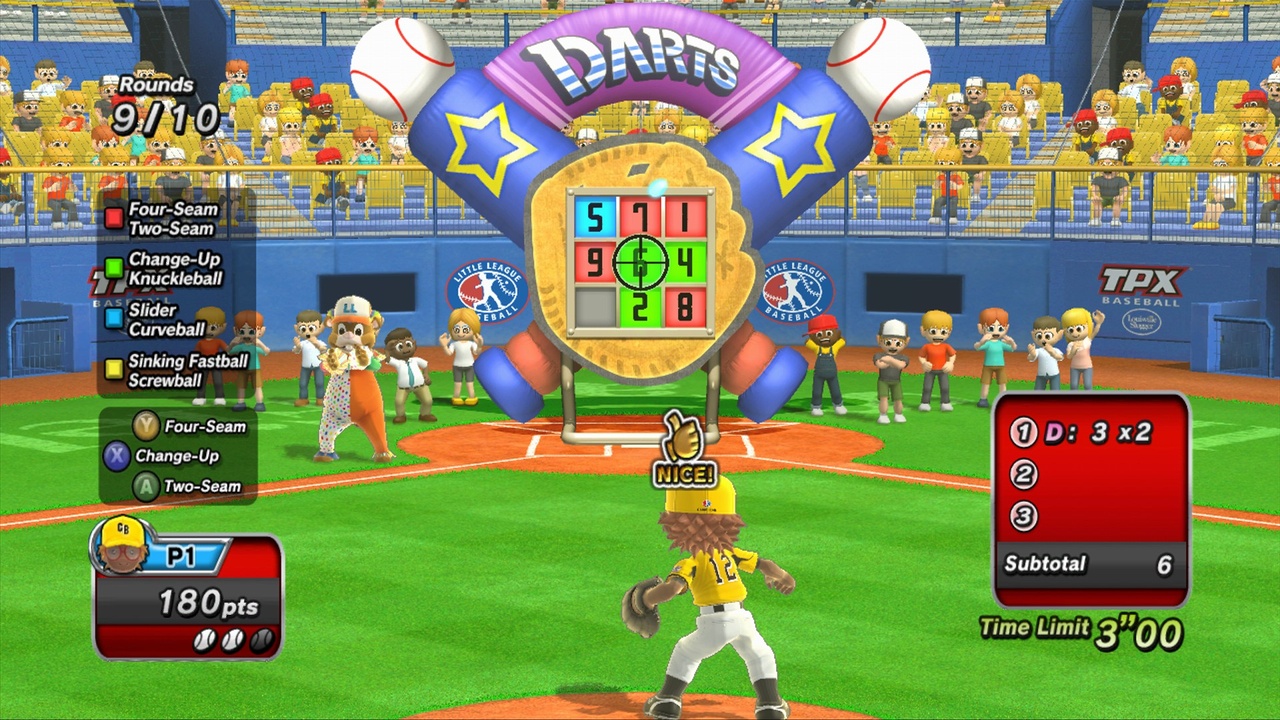Little League World Series Baseball 2010 is not going to make it to Williamsport, Pennsylvania. The official video game of the summer tournament that annually features the best Little League ballclubs from across the globe isn't world class by any stretch of the imagination, committing more errors than the Bad News Bears did before they picked up Kelly Leak. While the game has a likable enough personality, courtesy of anime-style ballplayers and a love of baseball right up there with Field of Dreams, many mistakes are made in core areas of the design, like pitching mechanics and the fielding camera. As a result, this shiny-happy ode to kids playing baseball can be more than a touch aggravating.

What first strikes you about Little League World Series 2010 is its unique presentation. Japanese developer NOW Production has given the game an anime style, complete with spiky-haired players with saucer eyes so big and glassy that they wouldn't look out of place on a teddy bear. It's a bit off-putting at first, especially if you're coming into the game expecting more of a serious arcade baseball simulation, given that the subject matter is a real-life tournament. Still, the kids look great, with cutesy expressions when they're showing off after making a big play or knocking in a run. Ballfields have a sunny, cheery appearance, with endless green grass, blue skies, starry nights, and spectators who sport lottery-winning grins. Sound effects are just as jolly. The ping of the aluminum bat, old-time music that sounds like something ripped from a Konami game circa 1990, and play-by-play from Brent Musburger and Gary Thorne that says little aside from how great these kids are provide even more of a lighthearted vibe.
Arcade gameplay is a match for the look and sound. Little League World Series 2010 initially seems like a fairly traditional baseball game because of the various play modes. You can re-create the entire Little League World Series tournament from regionals to the big show, stage exhibition matches with up to three friends locally (there is no online multiplayer support), and mess around with minigame challenges that test your pitching and hitting skills. However, this is not a serious baseball simulation. On the contrary, this is an arcade-first game that keeps one foot in baseball reality and the other in sheer fantasy. Yes, you have to play some real baseball here, lay down bunts to move over runners, mix up pitches, and that sort of thing. But you also earn points that rev up a talent meter used to light a pitcher or batter on fire, giving him or her extra oomph when it comes to throwing heat or pounding ball. Cards unlocked during play are used to buff player skills, increase the likelihood of hitting a line drive, daze fielders, or even do on-field stunts like throw a lob ball. Players can also move in spectacular fashion when powered up via the meter, leaping a dozen feet into the air to stab a liner or flying across the outfield to grab a fly before it bounces into the gap. All of these tricks add a sense of kiddie fun to games, as well as provide a strategic layer that requires you to carefully consider when to use a power-up or card to best boost your chances of pushing a run across the plate.
Unfortunately, these gimmicks are just about all that Little League World Series 2010 has going for it. Core gameplay is pretty shallow. Games fly by with a realistic number of runs crossing the plate (the squat anime fielders cover a surprising amount of turf), but there isn't much beyond "throw ball, hit ball." You swing either by pulling the right trigger/R2 button to take a normal swing or by holding it in and releasing it for a power cut. It's hard to tell the difference between the swings, though, since you can go for a power stroke and hit a dribbler and use a regular stroke to hit one over the wall. Pitching is just as simplistic: you hold in the right trigger while a meter fills up and then let it go to fire the ball across the plate. Pitchers sport just three default pitches--a four-seam fastball, a two-seam fastball, and a changeup--but these can be altered into curves, knucklers, sliders, and the like after release by pushing the left stick. The mechanics aren't very accurate, however, so a lot of the time you end up giving your thumb a workout and still throw one of the stock pitches. Breaking balls are magical if you can pull them off. Curves, changes, and their pals often float over the plate at an absurd height and still get called strikes. This makes it nearly impossible to work counts, because you can never be certain when a breaking pitch is a ball or a strike. After enduring this for a while, you soon give up and sit on fastballs.

Another problem is the camera angle. Most of the time in the field, the camera tracks a hit ball so closely that you don't see your fielders until the last second. As a result, you get great scenic views of pop flies that show little but ball and sky, and sideline shots of liners that obscure where the ball is on the field, so you don't know if the ball is going into the gap, landing for a routine single, or going to be caught. Thankfully, default fielding is mostly automatic, so at least your defense won't suffer too badly. Generally, an unseen fielder runs under the ball and takes care of business. Still, the wonky camera takes away the fun of watching plays, and it makes it hard to tell when you can push for extra bases when batting. The game should not have been released with the camera in such a poor state.
With more finesse and depth, Little League World Series Baseball 2010 could have been a contender. The action is fast-paced, and the anime graphical style gives the game a unique personality that straddles the line between a traditional arcade sports game and its more cartoonish brethren that usually sticks close to the funny-animal ghetto. But the gameplay is just too shallow to keep you playing for long, and issues with pitching and the camera add extra frustration to the mix. Little League deserves a better game than this.